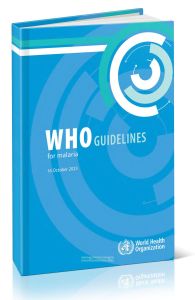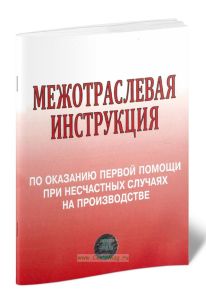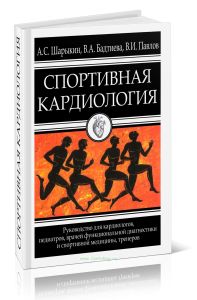- Артикул:00-01095113
- Обложка: Твердая обложка
- Издательство: World Health Organization (все книги издательства)
- Страниц: 452
- Формат: А4 (210x290 мм)
- Год: 2023
- Вес: 1280 г
World Health Organization Guidelines for Malaria 2023/Руководство Всемирной Организации Здравоохранения по борьбе с малярией на 2023 год
Книга на английском языке
The WHO Guidelines for malaria bring together the Organization’s most up-to-date recommendations for malaria in one user-friendly and easy-to-navigate online platform.
The WHO Guidelines for malaria supersedes 2 previous WHO publications: the Guidelines for the treatment of malaria, third edition and the Guidelines for malaria vector control. Recommendations on malaria will continue to be reviewed and, where appropriate, updated based on the latest available evidence. Any updated recommendations will always display the date of the most recent revision in the MAGICapp platform. With each update, a new PDF version of the consolidated guidelines will also be available for download on the WHO website.
This version of the Guidelines includes revised information regarding the WHO recommendation for use of indoor residual spraying to prevent malaria and the conditional recommendation against the use of topical repellents to control malaria at the community level. It replaces the versions published on 16 February 2021, 13 July 2021, 18 February 2022, 31 March 2022, 3 June 2022, 25 November 2022 and 14 March 2023.
Contents
Summary of recommendations
1. Abbreviations
2. Executive summary
2.1 Guideline translations
3. Introduction
4. Prevention
4.1 Vector control
4.1.1 Interventions recommended for large-scale deployment
4.1.2 Co-deploying ITNs and IRS
4.1.3 Supplementary interventions
4.1.4 Research needs
4.2 Preventive chemotherapies
4.2.1 Intermittent preventive treatment of malaria in pregnancy (IPTp)
4.2.2 Perennial malaria chemoprevention (PMC) - formerly intermittent preventive treatment of malaria in infants (IPTi)
4.2.3 Seasonal malaria chemoprevention (SMC)
4.2.4 Intermittent preventive treatment of malaria in school-aged children (IPTsc)
4.2.5 Post-discharge malaria chemoprevention (PDMC)
4.2.6 Mass drug administration (MDA)
4.2.6.1 MDA for burden reduction
4.2.6.2 MDA for burden reduction in emergency settings
4.2.6.3 MDA to reduce transmission of P. falciparum in very low to low transmission settings
4.2.6.4 MDA to reduce transmission of P. falciparum in moderate to high transmission settings
4.2.6.5 MDA to reduce transmission of P. vivax
4.2.6.6 Mass relapse prevention (MRP) to reduce transmission of P. vivax
4.3 Vaccine
5. Case management
5.1 Diagnosing malaria
5.2 Treating malaria
5.2.1 Treating uncomplicated malaria
5.2.1.1 Artemisinin-based combination therapy
5.2.1.1.1 Duration of treatment
5.2.1.1.2 Dosing of ACTs
5.2.1.2 Recurrent falciparum malaria
5.2.1.3 Reducing the transmissibility of treated P. falciparum infections in areas of low-intensity transmission
5.2.1.4 Special risk groups
5.2.1.4.1 Pregnant and lactating women
5.2.1.4.2 Young children and infants
5.2.1.4.3 Patients co-infected with HIV
5.2.1.4.4 Non-immune travellers
5.2.1.4.5 Uncomplicated hyperparasitaemia
5.2.1.5 Uncomplicated malaria caused by P. vivax, P. ovale, P. malariae or P. knowlesi
5.2.2 Treating severe malaria
5.2.2.1 Artesunate
5.2.2.2 Parenteral alternatives when artesunate is not available
5.2.2.3 Pre-referral treatment options
5.2.3 Other considerations in treating malaria
5.2.3.1 Management of malaria cases in special situations
5.2.3.2 Quality of antimalarial drugs
5.2.3.3 Monitoring efficacy and safety of antimalarial drugs and resistance
5.3 National adaptation and implementation
6. Interventions in the final phase of elimination and prevention of re-establishment
6.1 Interventions recommended for mass implementation in delimited geographical areas
6.1.1 Mass testing and treatment (MTaT)
6.2 Interventions targeting infections in people at higher-risk
6.2.1 Targeted drug administration (TDA)
6.2.2 Targeted testing and treatment (TTaT)
6.2.3 Testing and treatment at points of entry to reduce importation of malaria
6.3 Interventions in response to detection of confirmed malaria cases
6.3.1 Reactive drug administration (RDA)
6.3.2 Reactive case detection and treatment (RACDT)
6.3.3 Reactive indoor residual spraying
7. Surveillance
8. Methods
9. Glossary
10. Contributors and interests
10.1 Recommendations for vector control
10.2 Recommendations for chemoprevention
10.3 Malaria vaccine recommendation
10.4 Recommendations for treatment
10.5 Recommendations for interventions in the final phase of elimination and prevention of re-establishment
References
Annex: All evidence profiles, sorted by sections
Рекомендуем
Артикул 00201929




